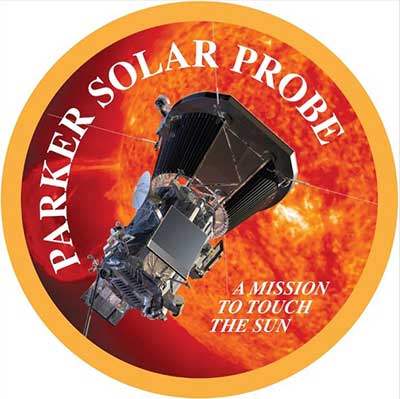GS-3 Science and Technology- developments
Key Phrases: Parker Solar Probe, NASA, Corona, Sun, Solar wind, origin of universe.
Why in News?
- For the first time in history, a spacecraft has touched the Sun. NASA’s Parker Solar Probe has now flown through the Sun’s upper atmosphere – the corona – and sampled particles and magnetic fields there.
What is the NASA Parker Solar Probe Missions?
- Parker Solar Probe is a historic mission, flying into the Sun's atmosphere (or corona) for the first time.
- It is set to fly into the sun’s corona within 3.8 million miles from the solar surface, seven times closer than any other spacecraft.
- Coming closer to the Sun than any previous spacecraft, Parker Solar Probe will employ a combination of in situ measurements and imaging to achieve the mission's primary scientific goal: to understand how the Sun's corona is heated and how the solar wind is accelerated.
- Parker Solar Probe will revolutionize our knowledge of the origin and evolution of the solar wind.
Goals for the mission:
- The primary science goals for the mission are:
- To trace the flow of energy and understand the heating of the solar corona and to explore what accelerates the solar wind.
- Determine the structure and dynamics of the plasma and magnetic fields at the sources of the solar wind.
- Explore dusty plasma near the Sun and its influence on solar wind and solar energetic particles formation.
- Explore mechanisms that accelerate and transport energetic particles.
Solar Storm
- A solar storm is a disturbance on the Sun, which can emanate outward across the heliosphere, affecting the entire Solar System, including Earth and its magnetosphere, and is the cause of space weather in the short-term with long-term patterns comprising space climate.
Why do we study the Sun and the solar wind?
- The Sun is the only star we can study up close. By studying this star we live with, we learn more about stars throughout the universe.
- The Sun is a source of light and heat for life on Earth. The more we know about it, the more we can understand how life on Earth developed.
- The Sun also affects Earth in less familiar ways. It is the source of the solar wind; a flow of ionized gases from the Sun that streams past Earth at speeds of more than 500 km per second (a million miles per hour).
- Disturbances in the solar wind shake Earth's magnetic field and pump energy into the radiation belts, part of a set of changes in near-Earth space known as space weather.
- Space weather can change the orbits of satellites, shorten their lifetimes, or interfere with on-board electronics. The more we learn about what causes space weather – and how to predict it – the more we can protect the satellites we depend on.
- The solar wind also fills up much of the solar system, dominating the space environment far past Earth. As we send spacecraft and astronauts further and further from home, we must understand this space environment just as early seafarers needed to understand the ocean.
Source: Nasa.gov
Mains Question:
Q. Recently NASA Parker Solar Probe made history to 'touches' Sun for first time. In this context what is NASA Parker Solar Probe mission? How it help to learn more about stars throughout the universe.









